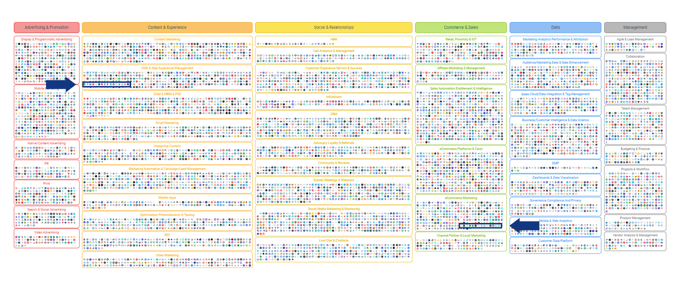Consider your browsing habits when visiting a website. Do you immediately gravitate towards the search bar or do you prefer to casually navigate through the main menu?
Marketing and content teams dedicate a significant amount of their resources, both time and budget, to driving traffic to an organization's website. Whether through external methods like SEO or paid media, getting people to your website is only half the battle. The real question is: what happens once visitors are there?
External vs. internal search
Let's start by exploring the various types of search. When it comes to guiding visitors to their desired destinations, we classify search as either external or internal.
External search refers to anything outside of your organization's website, intranet, app, or proprietary software. It is primarily used to attract visitors to your site through search engines, like Google or Bing, by ranking high within their search results.
On the other hand, internal search pertains to the search functionality within your organization's website, intranet, app, or software. Its purpose is to direct visitors to their destination while also keeping them engaged on the site for better experiences and increased conversions.
Why should you care about internal search?
Well, firstly, 43% of visitors go straight to the search bar when landing on a website. That's nearly half. We are in the age of digitization, and people want to be self-sufficient in their information discovery. Internal search helps those savvy visitors get where they need without having to pick up the phone or send an email.
Secondly, you haven't spent all this time creating content and optimizing your website just to lose people upon arrival! The wealth of assets and information your website holds becomes worthless if visitors struggle to locate it. That's where search comes in.
Internal search is an immediate way to improve the user experience by letting visitors search the way that best suits them. Beyond a traditional search bar, internal search can guide visitors through intelligent conversations or tailor results to each query through Q&A assistive chat.

Internal search also provides endless insights into the preferences and behaviors of your website visitors. By analyzing search queries, you gain a deeper understanding of what visitors are searching for and can adjust your content and marketing strategies accordingly. This valuable data also influences important business decisions, identifies gaps in content, or suggest areas for improvement.
Despite the numerous advantages of internal search, it still tends to be overlooked. Why is that?
The forgotten marketing tool
Marketers often find themselves wearing multiple hats, particularly when working on smaller teams. On a typical day, one may juggle tasks ranging from video production to designing graphics, sending emails to scheduling social media posts. When marketers have limited resources, they often rely on software solutions to streamline and automate their efforts. But choosing the right solution can be daunting.

Source: MarTech Map
There are over 9,000 martech (marketing technology) solutions and this number continues to grow. This MarTech Map identifies different marketing software or tools available across many categories. Overwhelming, much?
In a sea of countless solutions, it is no surprise that internal search often gets overlooked as a powerful marketing tool.
Improving marketing through search
Internal search may seem like a small piece of the overall marketing puzzle, but search insights provide some of the best information on how to deliver content and engage with your visitors.
Some of the best marketing strategies include gap analysis within search analytics. Understanding ineffective searches or analyzing your visitor intents lays the framework for a robust content strategy. Because you know what is working or not, you can update or create new content, or even improve your site's navigation to ensure visitors find what they need.
Intelligent search gives power to the marketer to easily promote or highlight content, such as new services or upcoming events. For example, if you have an upcoming event geared towards new parents, you may leverage a Banner for searches that include the term "baby" or "newborn." Similarly, if you have a product that is discontinued, you can implement tools like Boostings or Page Rankings to prioritize newer versions listed higher in search results.
Search is more than a bar on the top of your site. It's a valuable asset that can drive conversions, increase satisfaction, and impact business decisions. Unlock your website's full potential and keep visitors coming back with internal search from Cludo.